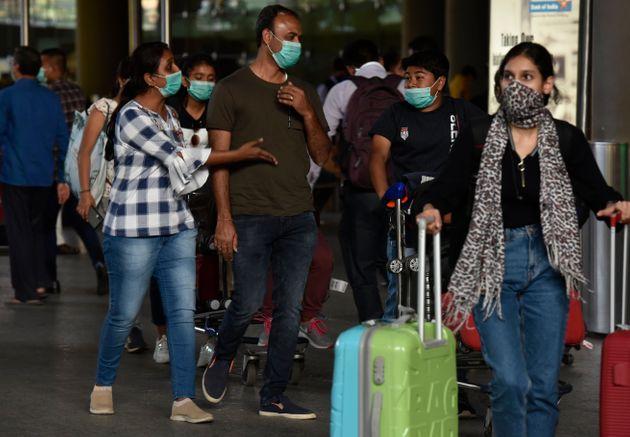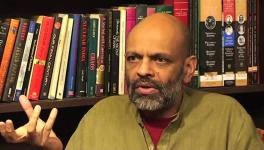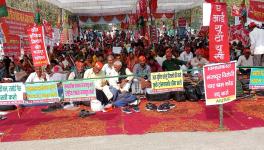No Evidence of Community Transmission of COVID-19 so far, says ICMR

Image Courtesy: Huffpost India
In its first batch of tests, the Indian Council of Medical Research (ICMR) has found that community transmission of coronavirus, COVID-19, has not occurred so far. To check for the community transmission, ICMR had picked 1,020 random samples with severe respiratory illness, pneumonia and influenza-like symptoms in March.
Of these, results of 500 samples are negative indicating that the community transmission of coronavirus has not yet occurred as of now. The results of the remaining 520 samples are yet to be released. The 1020 samples, which were tested in March, were collected between March 1 and March 15. These were sent to 51 labs under ICMR. The ICMR had tested random samples in February as well, and the results were negative.
“These samples are over and above the 11,500 throat swabs of symptomatic patients with travel history or those in contact with them,” said Nivedita Gupta, Scientist for Epidemiology and Communicable Diseases, ICMR.
If a positive case turned up, it would indicate community transmission and they would “enforce localised quarantine and testing measures in the areas from where samples were collected,” said ICMR.
However, ICMR Director General (DG) Balram Bhargava said, “It is too early to say that we have contained the virus. How strongly we close our borders… should help. We cannot say that community transmission will not happen.”
Read more: Which Country Is Spending How Much to Fight Coronavirus (COVID-19)?
The ICMR’s random tests are being done parallel to the testing and tracking of symptomatic travellers, symptomatic contacts of confirmed COVID-19 cases, and healthcare workers.
“Do we have evidence to suggest that asymptomatic infections are occurring in the population and they are spreading? If suppose I am getting cases of infection from asymptomatic individuals, and of spreaders, it should mean that I should be able to detect at least a few symptomatic cases,” senior scientist R.R. Gangakhedkar said.
At present, the government has 1.5 lakh testing kits, and has ordered 1 million more.
While answering questions on the sample size for random surveillance, Gangakhedkar reportedly said, “The samples are proportional to the local universe that is existing there. Twenty per week per lab means 80 in a month who are admitted in intensive care units with severe respiratory illness. Imagine a scenario of how many in an ICU have this, how many ICU beds are there. It is essentially representative for that entire city. Twenty may look like a small size but may not be a small size.”
Though the current total capacity for more than 70 functioning labs and the National Institute of Virology is 8,000 samples per day, only about 500 samples a day are being tested in all these labs. “To avoid indiscriminate testing and reducing panic and optimally utilising the resources of the country to scale up facilities… that is what our objective is,” Bhargava was quoted saying.
Read more: What Will the Post-Coronavirus Global Economy Look Like?
As of Wednesday evening, the number of positive reported cases of COVID-19 has reached 152, including three deaths. Of the total, 24 are foreign nationals and the rest of the patients are natives.
Experts, however, say that one of the reasons for India’s low number of positive cases could be the result of a narrow criteria for testing.
In an interview with Huffingtonpost India, T. Sundararaman, coordinator of People’s health movement and former director of National Health Systems Resources Centre, said: “The government needs to expand to 600 (testing) centres or so. You should have one testing centre in every district. At some point, you will need that. That’s the first thing.”
Secondly, he said that it was true that one couldn’t actually test every case of fever. However, any fever with respiratory symptoms “suggestive of early pneumonia, shortness of breath, should be tested. You should not wait for a contact relationship. You should be offering the test much more widely now. A much wider testing would have helped us establish community spread early and mark certain places for social distancing. But once community spread is established, your ability to actually limit that spread is somewhat limited. Some extent of social distancing will help. It will slow down the pandemic. The pandemic is not likely to go away but it is likely to flatten the curve.”
Read more: Covid-19 Pandemic Poses Fundamental Challenges to all Societies
Get the latest reports & analysis with people's perspective on Protests, movements & deep analytical videos, discussions of the current affairs in your Telegram app. Subscribe to NewsClick's Telegram channel & get Real-Time updates on stories, as they get published on our website.
























